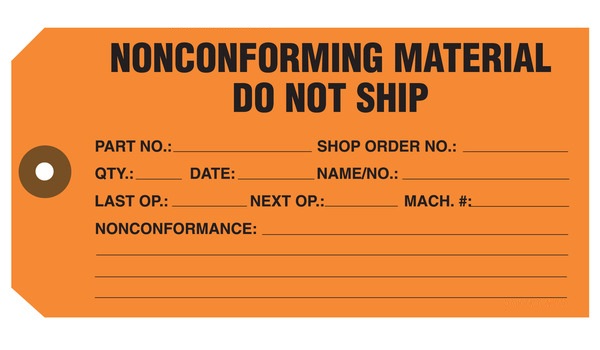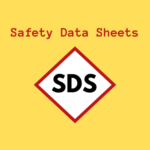Streamline Quality Management with Nonconformance Management Software

Introduction:
In today’s highly competitive business landscape, maintaining and improving product and service quality is paramount. Identifying and addressing nonconformances swiftly is crucial to prevent quality issues from escalating and impacting customer satisfaction. This is where Nonconformance Management Software plays a vital role. In this blog post, we will delve into the importance of Nonconformance Management Software and how it enables organizations to effectively manage nonconformances, drive continuous improvement, and ensure customer satisfaction.
Understanding Nonconformances:
Nonconformances refer to deviations from specified requirements or standards within an organization’s quality management system. These can occur at various stages, including manufacturing, service delivery, supplier processes, or customer interactions. Nonconformances can lead to quality issues, product recalls, service disruptions, customer complaints, or even compliance violations.
Challenges of Manual Nonconformance Management:
Traditional manual methods of managing nonconformances, such as paper-based systems or spreadsheets, pose several challenges:
- Lack of Visibility: Manual systems make it challenging to gain real-time visibility into nonconformance trends, root causes, and corrective actions, hindering proactive decision-making.
- Inefficient Processes: Manual processes for documenting, investigating, and resolving nonconformances are time-consuming, prone to errors, and can lead to delays in addressing issues.
- Compliance Risks: Inadequate documentation and tracking of nonconformances can result in compliance risks, as organizations may struggle to demonstrate their adherence to regulatory requirements.
- Limited Collaboration: Manual systems often lack collaboration features, making it difficult for teams to work together, share information, and collaborate on corrective actions.
The Benefits of Nonconformance Management Software:
Nonconformance Management Software offers several key benefits that streamline nonconformance handling and improve overall quality management:
- Centralized Tracking and Documentation: Nonconformance Management Software provides a centralized repository to capture, track, and document nonconformances. It ensures that all nonconformance data is recorded, categorized, and easily accessible for analysis and decision-making.
- Automated Workflows: The software automates the entire nonconformance management process, including initiation, investigation, root cause analysis, corrective actions, and closure. This eliminates manual errors, accelerates resolution times, and ensures consistent adherence to defined processes.
- Root Cause Analysis: Nonconformance Management Software enables organizations to conduct comprehensive root cause analyses to identify the underlying reasons for nonconformances. This helps address systemic issues rather than just treating the symptoms.
- Corrective and Preventive Actions (CAPA): The software facilitates the implementation and tracking of corrective and preventive actions. It ensures that appropriate actions are assigned, deadlines are set, and progress is monitored to prevent recurrence.
- Data Analysis and Reporting: Nonconformance Management Software provides robust data analysis and reporting capabilities. It allows organizations to identify recurring nonconformance trends, measure key performance indicators, and make data-driven decisions to drive continuous improvement.
- Collaboration and Communication: The software fosters collaboration among cross-functional teams, enabling effective communication, knowledge sharing, and collective problem-solving. It ensures that all stakeholders are involved, promoting a culture of accountability and continuous improvement.
The Trackmedium QMS Nonconformance Management Software Solution:
When considering Nonconformance Management Software, partnering with a reliable and innovative vendor like Trackmedium can significantly enhance your nonconformance management processes. Trackmedium QMS offers a comprehensive Nonconformance Management Software solution designed to streamline nonconformance handling, improve compliance, and drive overall quality management excellence.
With Trackmedium QMS, you gain access to a user-friendly interface, customizable workflows, advanced reporting, and analytics features. The software enables you to efficiently capture nonconformances, conduct thorough investigations, implement corrective actions, and monitor progress. It ensures that all nonconformances are properly documented, tracked, and resolved in a timely manner.
Additionally, Trackmedium QMS Nonconformance Management Software promotes collaboration among teams, facilitating effective communication, knowledge sharing, and collective problem-solving. It empowers organizations to proactively address nonconformances, prevent recurrences, and drive continuous improvement initiatives.
Conclusion:
Nonconformance Management Software is a critical component of an effective quality management system. It empowers organizations to streamline nonconformance handling, identify root causes, and implement corrective actions promptly. By leveraging Nonconformance Management Software, organizations can enhance product and service quality, improve customer satisfaction, and ensure compliance with regulatory requirements.
Choosing Trackmedium as your Nonconformance Management Software vendor provides you with a reliable and comprehensive solution. With its user-friendly interface, automated workflows, and robust reporting capabilities, Trackmedium QMS enables you to efficiently manage nonconformances, drive continuous improvement, and achieve operational excellence.
Embrace Nonconformance Management Software, partner with Trackmedium, and empower your organization to proactively address nonconformances, drive quality improvement, and deliver exceptional products and services.



















